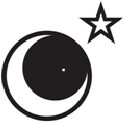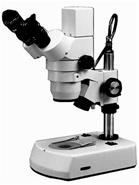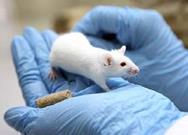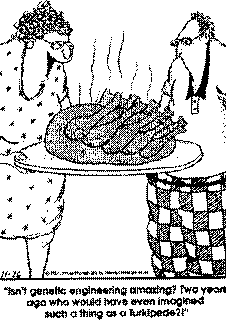Витамин Д, солнце, рак и загар
Витамин Д, или кальциферол, - это общее на- звание для животного витамина Д3 и растительно- го витамина Д2. Название «кальциферол» проис- ходит от слов: calcium и ferro (нести). Недостаток витамина Д вызывает сходное с рахитом заболева- ние, характеризующееся всеми симптомами не-
достатка кальция в организме: повышенной нерв- ной возбудимостью, беспокойством, нарушением мышечного тонуса, слабыми подёргиваниями мышц, отложением камней в почках, кариесом, ос- теомаляцией (размягчением костей).
Организм может черпать готовый витамин Д3 из пищи. Однако не пища является основным ис- точником кальциферола. Витамин способен синте- зироваться в коже человека под влиянием ультра- фиолетовых лучей солнца. Всемирно известный биохимик А. Ленинджер говорит, что если лицо ребёнка ежедневно хотя бы в течение 30 минут
 будет находиться под прямыми солнечными лучами, этого дос- таточно для обеспечения мини- мума суточной потребности в витамине Д. Солнце необходи- мо человеку в любом возрасте и при любом заболевании. Всё де-
будет находиться под прямыми солнечными лучами, этого дос- таточно для обеспечения мини- мума суточной потребности в витамине Д. Солнце необходи- мо человеку в любом возрасте и при любом заболевании. Всё де-
ло в дозе облучения.
Солнечный спектр включает ультрафиолетовые лучи. А они при длительном воздействии небезо- пасны. Но солнечные лучи, профильтрованные че- рез обычное стекло, т. е. лишенные ультрафиоле- товой части спектра, полностью теряют канцеро- генную активность. Экспериментальные исследо- вания указывают на возможность радиозащитного действия загара. Вместе с этим солнечные лучи повышают адаптационные возможности организ- ма, укрепляют иммунную систему. Ультрафиоле- товое излучение стимулирует кроветворение,
 улучшает усвоение железа.
улучшает усвоение железа.
26. Role play game.
THE UNIVERSE” ROLE
PLAY: This role play is to discuss and decide which is the most impor-
tant part of the universe. Team up with classmates who have been assigned the same role to develop your roles and discuss ideas and “strategies” before the role play begins.
Introduce yourself to the other role players before the role play begins.
Role A – Sun
Some of your benefits:
You are the centre of the universe. There can be no life without you. You give warmth, light and en- ergy.
The most beautiful creatures and things live on you. Without earth there is nothing.
Why you are better than the moon and sun.
27. Make an information sheet about the benefits and dangers of UV rays. Write a for-and-against es- say.
28. Write a letter of thanks to the sun. Explain how important you think the sun is and what part it plays in your everyday life. Next lesson show your let- ter to your classmates. Compare the things you wrote about.
Write why you are better than the moon and earth.
Role B – Moon
Some of your benefits:
You are mysterious. You control the movement of the earth’s oceans. You will not die one day like the sun. After the earth dies, people will live on you.
Why you are better than the sun and earth.
Role C – Earth
Some of your benefits:
You are the most important part of the universe.
Unit 16
Biotechnology.
General knowledge
You study at the faculty of Medical Biotechnol- ogy. Why did you choose this faculty?
What field of biotechnology are you going to study in future?
Say in your words what biotechnology is.
1.  Read this text and trans- late it.
Read this text and trans- late it.
What is biotechnology?
The term "Biotechnology" (sometimes shortened to "bio- tech") consists of two parts. Bio is a Greek word for "life" and tech-
nology gives an indication of human intervention. Bio- technology can be based on the pure biological sci- ences (genetics, microbiology, animal cell culture, molecular biology, biochemistry, embryology, cell bi- ology). Also its interests can be outside the sphere of biology (chemical engineering, bioprocess engineer- ing, information technology, biorobotics). Biotechnol- ogy deals with brewing, manufacture of human insu- lin, interferon, and human growth hormone, medical diagnostics, cell cloning and reproductive cloning, the genetic modification of crops, bioconversion of or-
ganic waste and the use of genetically altered bacteria in the cleanup of oil spills, stem cell research and much more.
As a matter of fact, biotechnology is very an- cient. Six thousand years ago, micro-organisms were used to brew beers and to produce wine, bread and cheese.Yeast makes dough rise and converts sugars into alcohol. Lactic acid bacteria in milk create cheese and yoghurt. This application of biotechnology is the directed use of organisms for the manufacture of or- ganic products (examples include beer and milk prod- ucts). In this way, classical biotechnology refers to the traditional techniques used to breed animals and plants, as well as to the application of bacteria, yeasts and molds to make bread or cheese.
Modern biotechnology came into being during the nineteen seventies. Ithas often been divided into several categories; every field of this science is some- times connected with the definite color.
Green biotechnology is biotechnology applied to agricultural processes. An example would be the se- lection and domestication of plants via micro propaga- tion. Another example is the designing of transgenic plants to grow under specific environments in the presence (or absence) of chemicals. One hope is that green biotechnology might produce more environmen- tally friendly solutions than traditional industrial agri- culture, although this is still a topic of considerable debate.
Red biotechnology is applied to medical proc- esses. Some examples are the designing of organisms
to produce antibiotics, and the engineering of genetic cures through genetic manipulation.
White biotechnology, also known as industrial biotechnology, is biotechnology applied to industrial processes. An example is using naturally present bac- teria by the mining industry in bioleaching; so it is the designing of an organism to produce a useful chemi- calor destroy hazardous/polluting chemicals. White biotechnology tends to consume less in resources than traditional processes used to produce industrial goods.
Blue biotechnology is a term that has been used to describe the marine and aquatic applications of bio- technology, but its use is relatively rare.
Bioinformatics is an interdisciplinary field which
computational tech- nique
consume (v) convert (v) deal with (v) domestication
genetic manipulation hazardous
hormone indicate (v) interferon intervention key role
marine molecule
pharmaceutical sector polluting
presenxe produce (v) rare selection solution
stem cell research technique transgenic plant
addresses biological problems using computational techniques, and makes the rapid organization and analysis of biological data possible. Bioinformatics plays a key role in various areas, such as functional genomics, structural genomics, and proteomics, and forms a key component in the biotechnology and pharmaceutical sector.
In conclusion biotechnology can berefered to any technological application that uses biological systems, living organisms, or derivatives thereof, to make or modify products or processes for specific use.
Vocabulary
2. Translate the sentences into English using the words you learned.
1) Все живые организмы либо, как многокле- точные животные, растения и грибы, состоят из множества клеток, либо, как мно- гие простейшие и бактерии, являются одноклеточными организмами.
2) Антибиотики подавляюn рост бактерий и других микробов, а также вирусов и клеток.
3) Генетический код — свойственный всем живым организмам способ кодирования аминокислотной последовательности белков при помощи последовательности нуклеотидов.
4) В настоящее время существуют различные
absence antibiotics bioconversion
brew (v) chamicals cleanup
способы ликвидации разливов нефти на почву, та- кие как, механические, физико- химические, агротехнические и биологические.
5) Гормоны есть у всех млекопитающих, включая человека.
6) Биотехнологи производят лекарственные препараты из трупных ядов, обычно считающихся опасными химическими веществами.
7) Ключевую роль в исследовании трансген- ных растений играют последние открытия.
8) Развитие фармацевтического сектора указывает на увеличение открытий в сфере фар- мацевтики.
3. Give detailed answers to the questions.
5. Write a summary of the text in your own words making use of plan and the sentences you’ve written out.
6. Orally enlarge this summary and retell the
text.
7. Test your knowledge in biotechnology. Choose the correct answer.
1. The vector (DNA carrier) we used to put the glowing gene into the bacteria is called a…
of?
1) What does the term ‘biotechnology’ consist
2) Can you count the areas of biotechnology?
a) Chromosome
b) Virus
c) Pipet
d) Plasmid
3) Is biotechnology a new science or not? Give facts to prove it.
2. During a gel electrophoresis experiment, the
small segment of DNA will move….
ogy?
4) What is classical and modern biotechnol-
a) Backwards
b) Fast
c) Slow
d) Sideways
5) When did modern biotechnology begin?
6) What is bioinformatics? What is its role?
7) What biotechnology applies to agricultural processes?
8) What can green biotechnology design?
3. What tool do you use in lab to take very small samples of a liquid?
a) A beaker c) A micropipette
b) A graduated cylinder d) Safety glasses
9) What does red biotechnology deal with?
10) Give the examples of industrial biotechnol- ogy using?
11) What does blue biotechnology deal with?
4. Write out the sentences expressing the main ideas of each logical part of the text.
4. In electrophoresis, where do the DNA sam- ples go?
a) Straight up into the air
b) They move through the gel
c) Nowhere
d) Into a micropipette
5. What do you need to use so that you can es- timate the size of the DNA bands?
a) Bacteria
b) Octopus
d) Jellyfish
e) Glow worms
a) A micropipette
b) A meter stick
c) An electronic balance
d) A DNA standard
c) Fireflies
12. A small piece of extra DNA found in bacte-
6. When doing gel electrophoresis, how do you know that your gel is running and the electricity is on?
a) You see bubbles
ria is called…
a) Chromosome
b) Base pair
c) Double helix
d) Plasmid
e) Nucleus
b) You see sparks
c) You hear a noise
d) The light flashes
7. What makes the DNA move during gel elec- trophoresis?
13. The letter PCR stands for…
a) Pretty cool reaction
b) Polymerase chain reaction
c) Partly complete RNA
d) Partly complete reaction
a) Electricity
b) Gravity
c) Water
d) Wind
e) Pure chain reaction
14. GEP (green fluorescent protein) makes jel- lyfish….
8. All the cells in your body have the same
DNA, even though they do not look the same or have the same job.
a) True b) False
a) Reproduce
b) Glow
c) Shrink
d) Bigger
e) sleepy
9. Stem sells can be found in your heart.
a) True b) False
10. DNA fingerprinting can be used to identify a criminal.
a) True b) False
11. The DNA for the glowing gene came from:
8. Study the Gerund. Complete the following sen- tences using gerunds.
1) (Be) free and alone is a good thing if you are tired of big cities. 2) (Find) you here was a quite a surprise. 3) If this is what you intend (ask) me, stop (waste) your time. 4) They kept on (talk) though the band began (play). 5) Everyone enjoyed (swim) in the river. 6) My watch needs (repair). 7) He never men-
tioned (live) in Prague. 8) He does not seem to mind (air) the room. 9) Just imagine (go) there together! 10) Don't put of (do) it now. If you postpone (receive) a visa again, you will miss an excellent opportunity of (go) there.
9. Translate into English using gerunds where possible.
1) Я настаиваю, чтобы ты показал нам свой новый автомобиль. 2) Маленький мальчик гордил- ся тем, что у него такой благородный (noble) друг.
3) Этот фильм стоит посмотреть. Вам не сможет не понравиться прекрасная игра (performance) ак- теров. 4) Было невозможно достать билет, и ему пришлось отказаться от мысли послушать знаме- нитого пианиста. 5) Я помню, он громко смеялся, когда рассказывал эту историю. 6) Она была уве- рена, что мальчики уже давно перестали работать и убежали на речку. 7) Она сидела в гостиной (drawingroom), не говоря ни слова и не обращая внимания на болтовню (chat) своей сестры. 8) Не отвечая на приветствия, он быстро прошел в зал.
9) Он намеревался начать свое расследование (in- vestigation) с осмотра сада. 10) Он терпеть не мо- жет, когда его хвалят.
10. Study the Participle. Find the difference be- tween Participles I and II. Open the brackets and fill in with the proper participle.
1) He fell asleep (exhaust) by the journey. 2) She entered the dining room (accompany) by her husband
and her father. 3) A snake (sleep) in the grass will bite if anyone treads upon it. 4) (Fill) his pockets with ap- ples the boy was about to run away when he saw the owner of the garden with a stick in his hand. 5) It was a bright Sunday morning of early summer (promise) heat. 6) When I came home, I found the table (lay). 7) (Judge) by the color of the sun it should be windy to- morrow. 8) (Arrive) at a big seaport, I started to look for a job. 9) He had received an urgent message (ask) him to telephone Sir Matthew. 10) He looked at groups of young girls (walk) arm in arm. 11) In the wood they sat down on a (fall) tree. 12) (See) from the hill the city looks magnificent. 13) (Not know) where to go he turned to a passer-by. 14) (Lock) in her room she threw a fit. 15) (Address) the parcel, I went out at once to post it.
11. Translate into English using participles where possible.
1) Будьте внимательны, когда ведете машину.
2) На листе бумаги было несколько строк, напи- санных карандашом. 3) Получив телеграмму, моя сестра немедленно выехала в Глазго. 4) Я не знаю человека, говорящего по телефону. 5) Уехав вече- ром, мы прибыли в город в 6 утра. 6) Полученное известие взволновало всех. 7) Я оставила ей запис- ку, не застав ее дома. 8) Чувствуя усталость, они решили передохнуть. 9) Я не запомнил имя чело- века, звонившего вам вчера. 10) Мы сидели на террасе, наслаждаясь чудесным видом гор, окру- жающих наш отель.
12. Read this text and translate it.
Medical biotechnology
Medical biotechnology is the use of living cell materials to research and produce pharmaceutical and diagnostic products that help to treat and prevent humane diseases. Most medical biotechnologists work in academic of industrial settings.
Medical and pharmaceutical biotechnology can speed diagnosis, prevention, and certain therapies. Biotech medicine includes the creation of new vac- cines, neutraceuticals, cosmetics with active biologi- cal ingredients, and medicines from transgenic ani- mals and plants.
Due to the new basis, lack of experience and ig- norance, the implementation of results of some areas of biotechnology (such as about stem cells, genetic enhancement, cell cloning, testing of new drugs in developing nations, controls of transgenic crops, and international regulation and enforcement) met severe resistance of society. Recombinant DNA and hybri- doma technologies have been applied long time ago for manufacturing of rare and unique drugs (mainly
 protein) for human and veterinary medicine. Presently more than 150 recombinant proteins are approved or are in clinical trials for medi- cal use.
protein) for human and veterinary medicine. Presently more than 150 recombinant proteins are approved or are in clinical trials for medi- cal use.
Biotechnology met new challenges after the year 2000 when the human genome was sequenced. Although the function of 95% of the human 31 000 genes is still obscure, they all are of potential interest for the pharmaceutical biotechnology. The sequenc- ing of human genome laid the foundations of a new branch of biotechnology called “genomic technolo- gies”. They include not only sequencing of new genes and genomes but also development of molecu- lar (DNA and RNA) markers and microarray chips for detecting mutant genes and methods for specific gene silencing (suppression) and/or repair of defec- tive genes for the purposes of gene therapy.
The fields of application of modern biotechnol- ogy techniques are medicines, vaccines, diagnostics, gene therapy, bioactive therapeutic, clinical and con- tract research and neutraceuticals.
13. Give Russian equivalents for the following words:
powerful techniques, recombinant DNA, hybri- doma technologies, fermentation technologies, natural materials, achievements of genetic and cell engineer- ing, medical and pharmaceutical biotechnology, diag- nosis, prevention, biotech medicine, creation of new vaccines, active biological ingredients, transgenic animals and plants, stem cells, genetic enhancement, cell cloning, veterinary medicine, recombinant pro- teins, human genome, pharmaceutical biotechnology, genomic technologies, development of molecular
markers and microarray chips, gene therapy, bioactive
therapeutic.
14. Translate the sentences into English.
1) Трансгенный организм — живой организм, в геном которого искусственно введен ген другого организма.
2) Пациенту была назначена музыкальная те- рапия.
3) Ему поставили диагноз– менингит.
4) В клинических исследованиях принимают участие ведущие медики страны.
5) Ученые должны ускорить темп работы, ес- ли они хотят закончить к условленному сроку.
6) Рекомбинантная ДНК - составлена из фрагментов разного происхождения.
7) Рекомбинантные белки - это белки, ДНК которых была создана искусственно.
15. Give detailed answers to the questions.
1) What does biotech medicine include?
2) Why did some areas of biotechnology meet severe resistance of society?
3) How were recombinant DNA and hybridoma technologies used?
4) How many recombinant proteins are approved in clinics?
5) When did biotechnology meet new challenges?
6) What is “genomic technologies”?
7) List the fields of application of modern bio- technology techniques.
16. Speak on the new facts you found in the text. What wondered you or what information was new for you? Can you add some other information about the biotechnology?
17. Discover the difference in the sense of the following words:
Medicine, drug, tablets, medication, remedy, cure, medicament, preparation, physic, therapeutic, doctor's stuff.
18. Make sentences showing the difference of these words.
19. Read the text again and make questions to each paragraph.
20. Give a summary of this text. Check if all ideas from this text were used.
21 Translate this text about the topic you study.
Впервые термин «биотехнология» применил венгерский инженер Карл Эреки в 1917 году.
Использование в промышленном производ- стве микроорганизмов или их ферментов, обеспе- чивающих технологический процесс известны из- древле.
В начале XX века активно развивалась бро- дильная и микробиологическая промышленность. В эти же годы были предприняты первые попытки
наладить производство антибиотиков, пищевых концентратов, полученных из дрожжей, осущест- вить контроль ферментации продуктов раститель- ного и животного происхождения. Первый анти- биотик — пенициллин — удалось выделить и очи- стить до приемлемого уровня в 1940 году. Это да- ло новые задачи: поиск и производство лекарст- венных веществ, продуцируемых микроорганиз- мамии повышением уровня биобезопасности но- вых лекарственных препаратов.
22. Give a detailed answer or write an essay on the following questions:
· The future of biotechnology.
· What scientist will I be? And how will I help hu- manity?
· What color of biotechnology is necessary to add?
* The answers to the exercise 7(1-d, 2-b, 3-c, 4-b, 5- d, 6-a, 7-a, 8-a, 9-b, 10-a, 11-d, 12-d, 13-b, 14-b).
Unit 17
Genetic Engineering
What areas of biotechnology do you know?
 What does genetic engineering deal with?
What does genetic engineering deal with?
Where can bio- technologists apply the products of genetic en- gineering?
Comment the joke on the picture. How do you understand it?
1. Read this text and translate.
